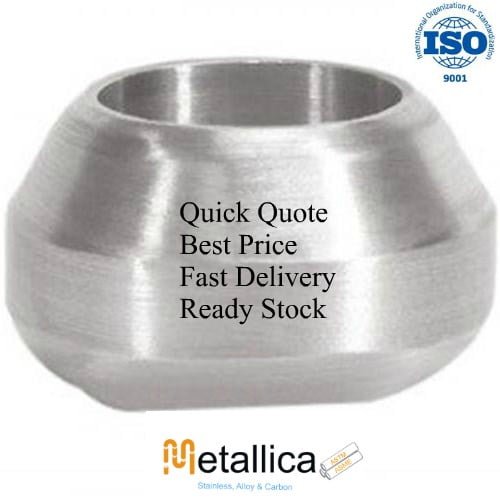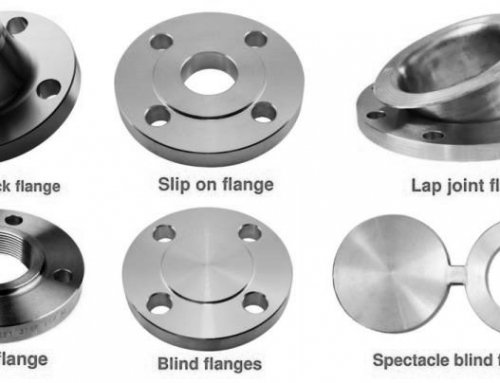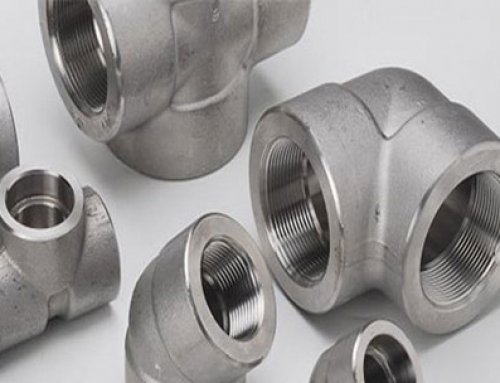Introduction to Olets
Olet fittings (also known as branch connections or pipe branch outlet fittings)are a family of forged products used to make 45 or 90 degrees integrally reinforced branch connections (deviations) from a run pipe (also called, header pipe) to a branch pipe (outlet pipe). MSS-SP 97 is the key specification covering reinforced branch connections, introduced by Bonney Forge in the piping market more than 70 years ago. Self-reinforced branches (Olets) are designed as per Process Piping Code ASME B31.3
Branch Connection fittings (also known as O’lets) are fittings which provide an outlet from a larger pipe to a smaller one (or one of the same size). The main pipe onto which the branch connection is welded is usually called the Run or Header size. The pipe to which the branch connection provides a channel is usually called the Branch or Outlet size. Branch connections are in all sizes, types, bores, and classes, in a wide range of stainless steel, chrome-moly, and other alloys.
Installation
On one side, the fittings (example a Weldolet) is fixed onto the run pipe with a full penetration groove weld and, on the other side, welded (or screwed) on the branch pipe. Of course, the header pipe shall be properly cut in the proximity of the area where the pipe needs to be branched.
Advantages
- Less space is required, making the piping system design more flexible
- The flow is fully unrestricted, due to the funnel design
- Just 2 welds are needed, instead of 3 (less work and weld inspections)
- Accelerated installation time
How To Order Branch Fittings
Suppliers of Weldolets, Thredolets, Sockolets, and other branch fittings need the following information to identify the needed product:
- Header run pipe size (which is generally expressed as a range of possible sizes, example 36-22)
- Branch pipe size (the NPS of the connecting pipe to the run pipe, example 6 inches)
- Branch pipe schedule (which can be STD, XS, 160, XXS) for buttweld types of connections (rating shall be provided for socket weld and NPT threaded Olets)
- Style of branch fitting (Weldolet, Thredolet, Nipolet, Sockolet, etc)
- Material Grade (example A105, A350 LF2, A182 F304)
Specifying the Schedule of both the Run and Branch
Generally the schedules of the run pipe and branch pipe are identical and thus specification of the equivalent schedule Weldolet assures the proper fitting being used. For examples:-
- 16″ Standard weight x 6″ Standard weight is specified as a 6″ standard weight fitting.
Where the schedule of the run is greater or less than the schedule of the branch, it is essential that both schedules be specified since (a) The Weldolet’s reinforcing characteristics are a function of the run pipe wall thickness, which in turn designates the schedule of the basic Weldolet® fitting to be used;(b) The wall thickness of the outlet or branch end must match the wall thickness of the branch pipe.
- 16″ Extra strong x 6″ Standard weight
16″ Standard weight x 6″ Extra strong
Special care is suggested to avoid confusing schedule 40 and standard weight as being identical (above 10″ schedule 40 is heavier) and schedule 80 and extra strong (above 8″ schedule 80 is heavier).
- 8″ Schedule 80 x 4″ Schedule 80 fitting or extra strong fitting.18″ Schedule 80 x 4″ Schedule 80 is a considerably heavier fitting, because the reinforcement is for 18″ schedule 80 pipe with a wall thickness of approximately 1″.
The Weldolet® is available in standard code designs for all combinations of run wall thicknesses up through 3.1/2″ thickness and branch wall thicknesses up through double extra strong. Designs for thicknesses greater than these can be developed on request.
Stock and Product Specification
| Size: | 1/8″NB TO 4″NB (DN6 x DN100) |
| Class: | 3000 LBS, 6000 LBS & 9000 LBS (Sch40, Sch80/Xs Sch160 Xxs) |
| Standards: | ASME/ANSI B16.11, MSS-SP-97, MSS-SP-79, JIS B2316, BS 3799, etc. |
| Connect Type: | Welded, threaded, BW, SW |
| Materials: |
|
| Line Pipe: | ASTM A694 F42, F46, F52, F56, F60, F65, F70Low |
| Optional Value Added Services: | Hot Rolling, Cold Rolling, Galvanizing, Heat Treatment, Tempering, Electro Polishing, Threading, Sand Blasting, Soldering. |
| Applications | Petrochemical industry, Pharmaceutical industry, Food industry, Aviation and aerospace industry, Architectural decoration industry, Oil and Gas Pipeline industry |
There are 13 types of branch connections:
Weldolet (WEL)
- Weldolet is 90° branch connection
- It Comes in full size or reducing size (Full size is when you take branch of the same size as run pipe size for example, 3 inch to 3 inch. And reducing size is when branch size is less than run pipe size for example, 3 inch to 1 inch)
- Weldolet’s end is suited for the butt welding connection.
Threadolet (TOL)
- Threadolet is 90° branch connection comes with threaded end connection
- It also Comes in full size or reducing size
- End connection is suited for threaded joint
Sockolet (SOC)
- Sockolet is same as weldolet but with socket end.
- It is 90° branch connection
- Comes in full size or reducing size
- End connection is suited for socket welding
Elbolet (ELO)
- Elbolet is a special type of olets which fits on elbow surface.
- It is 90° branch connection and comes in different types of ends that suit for butt welding, socket welding and threaded joint
Insert Weldolet
- It is another contoured butt-weld branch connection used in less critical applications.
- Like the Sweepolet, the attachment welds are easily examined by radiography, ultrasound and other standard non-destructive techniques.
- Manufactured to meet your specific reinforcement requirements.
Brazolet
- It is designed for use with KLM and IPS brass or copper tubing.
- Available with socket or threaded connections.
Coupolet
- Coupolet is Olets with female NPT thread that uses for low-pressure This will reduce use of one sockolet and one coupling.
Nipolet
- Nipolet is weldolet with extended pipe body. As you can see in the image
- It is 90° branch connection and comes in different types of ends that suit for butt welding, socket welding or threaded joint
Flexolet
- Flexolet reduces the number of fitting sizes per outlet required, made possible bythe revisions to the MSS specification.
- This means less warehouse bin locations, fewer individual inventory items, and less time needed for filling orders.
Latrolet (LOL)
- There are some special olets also used in piping such as Latrolet that is used for taking branch which is not at 90 degrees to run pipe.
- Latrolet comes in a 45°or any other special degree as required by purchaser
- End connections of a Latrolet can be butt welded, socket welded or threaded.
Sweepolet
- Sweepolet is used for large size branch connection.
- It provides smooth flow transition from run pipe to branch pipe.
- Sweepolet is used in piping header and pressure vessel when smooth flow transition is necessary and standard tee cannot be used.
Try the site of Bonney Forge. They have all the size dimensions and you’ll be sure the fittings have a design approval. It seems that the dimensions specified in MSS SP-97 are based on Bonney Forge.





